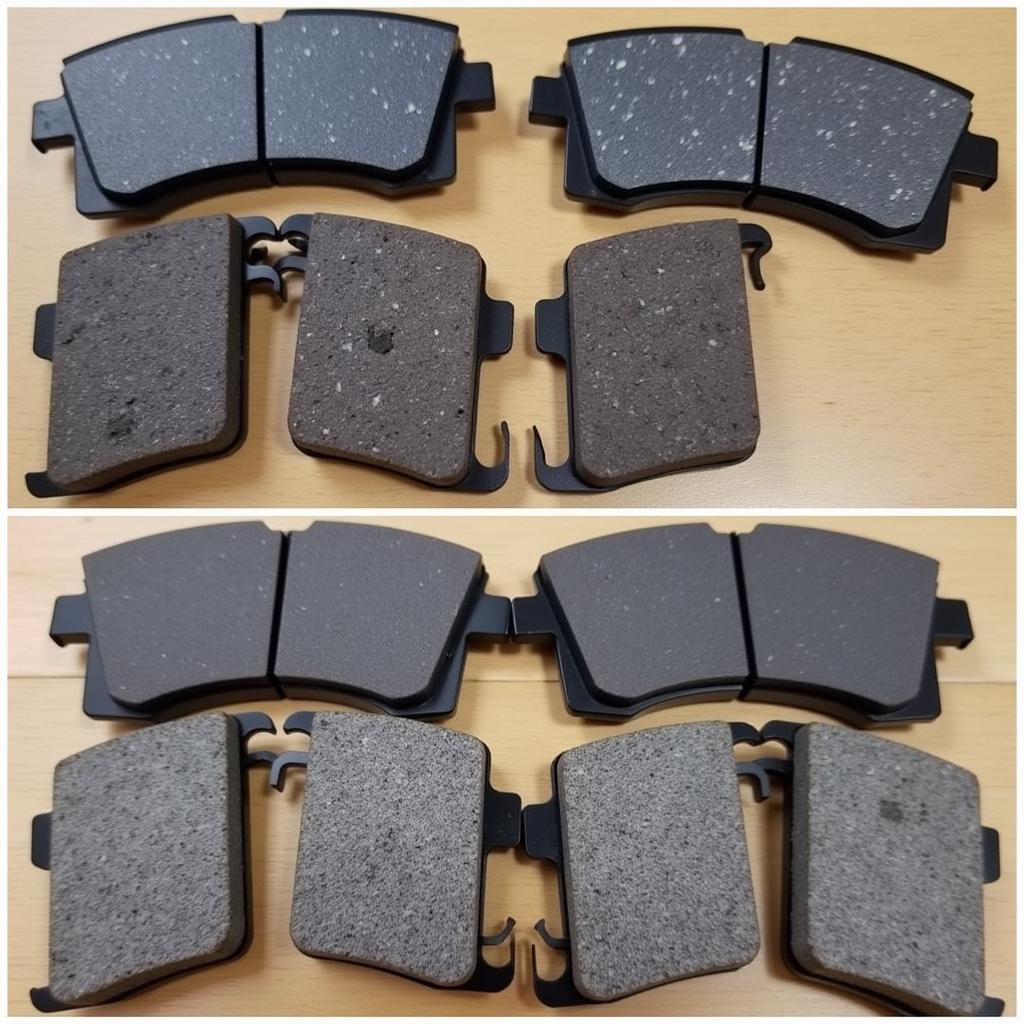My car has no power and won’t start – a frustrating situation that many drivers experience. This article provides a comprehensive guide to diagnosing and troubleshooting this common car problem, offering practical solutions and expert insights to get you back on the road. We’ll explore everything from the simplest checks to more complex issues, empowering you to understand the potential causes and take appropriate action.
 Car Battery Terminals with Corrosion
Car Battery Terminals with Corrosion
A dead battery is often the first suspect when your car has no power. Check the battery terminals for corrosion. Corrosion can disrupt the flow of electricity, preventing your car from starting. If you see any corrosion, clean the terminals with a wire brush and baking soda solution. Then, try starting your car again. Sometimes, a simple jump start can solve the problem, especially if you’ve left your lights on overnight. If you need help jump-starting your car, refer to our guide on my car wont jump start.
Common Reasons Why Your Car Has No Power
There are several reasons why your car might have no power and refuse to start. Beyond a dead battery, consider the following possibilities:
Faulty Alternator
The alternator is responsible for charging the battery while the engine is running. A faulty alternator can drain the battery, leaving you stranded.
 Faulty Alternator in Car Engine
Faulty Alternator in Car Engine
Ignition System Problems
Your car’s ignition system is crucial for starting the engine. A malfunctioning ignition switch, a bad starter motor, or issues with the spark plugs can prevent your car from starting. For more information on spark plug issues, you can check out our article on car wont spark.
Fuel System Issues
If your car has no power, it might not be getting fuel. A clogged fuel filter, a faulty fuel pump, or a problem with the fuel injectors can prevent fuel from reaching the engine.
Electrical Problems
A blown fuse, a damaged relay, or a wiring issue can cause a complete power loss in your car.
Troubleshooting “My Car Has No Power”
When your car won’t start, it can be overwhelming. Here’s a step-by-step approach to troubleshoot the issue:
- Check the Battery: Inspect the terminals for corrosion and ensure they’re tightly connected.
- Try Jump Starting: If the battery seems dead, attempt a jump start.
- Listen for the Starter: When you turn the key, do you hear a clicking sound? This could indicate a starter motor problem.
- Check the Fuel Gauge: Ensure you have enough fuel. A surprisingly empty tank can be the culprit.
- Inspect the Fuses: Look for blown fuses in the fuse box and replace them if necessary.
What if I Installed a New Alternator and Battery?
Sometimes, even replacing the alternator and battery doesn’t solve the problem. This could indicate a deeper electrical issue. For further assistance on this matter, please visit our resource on new alternator and battery car still wont start.
Remote Diagnostics and Programming
Modern vehicles rely heavily on software. Remote diagnostics and programming can identify and resolve software-related issues that may be causing your car’s power problems.
“Remote diagnostics allow us to quickly pinpoint the root cause of a vehicle’s issue, saving time and money for the customer,” says John Smith, Senior Automotive Diagnostic Technician at XYZ Auto Repair.
“Software updates and programming can often resolve complex problems without the need for extensive physical repairs,” adds Jane Doe, Lead Software Engineer at ABC Automotive Solutions.
Why Won’t My Car Start? FAQs
- Q: Could my car alarm be draining the battery? A: Yes, a malfunctioning car alarm can drain your battery, leading to a no-start situation.
- Q: What if my car starts but then dies immediately? A: This could indicate a problem with the fuel system, ignition system, or other critical components.
- Q: How can I prevent future power problems? A: Regular maintenance, including battery checks and alternator inspections, can help prevent future issues.
In conclusion, when your car has no power and won’t start, methodical troubleshooting is key. From checking the battery and alternator to considering software-related issues, a comprehensive approach can help identify the culprit. If you’re interested in upgrading your car’s audio system, our guide on how to install a car radio system might be helpful. If your jump starter isn’t working, we have a guide for that too: battery jump starter not working. Remember, professional diagnostic services can provide expert assistance when needed.


